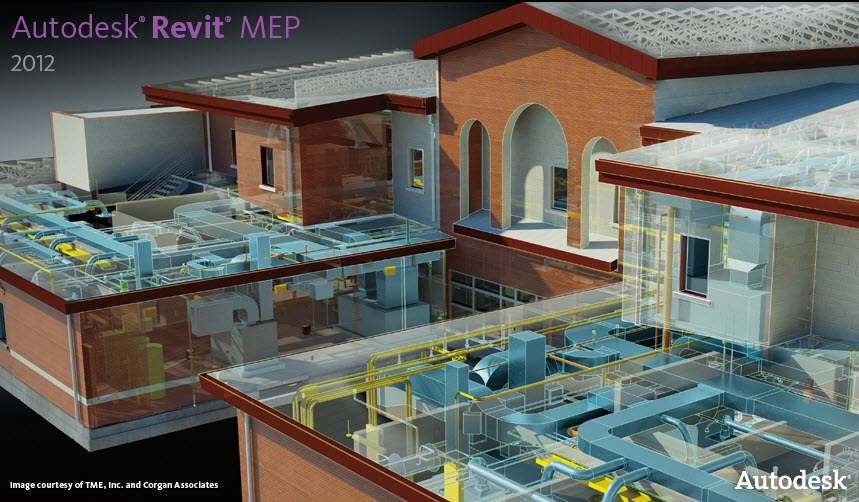One of the advantages of Autodesk Revit is that each view has individual graphic, scale, discipline, phase and view range settings; and changes to these parameters only affect the selected view. The view visibility of categories and subcategories can be set and saved to a view template (similar to layer states in AutoCAD). Two examples of different views of the same level are shown below.
These view specific settings can also be a disadvantage when you have to use the same settings on another view. When you duplicate floor plans to create furniture, fire safety or area plans for different levels, you change different view settings for each type of plan. Instead of repeating the effort of changing each parameter every time you create these views, you can save them as View Templates. These can then be applied to other views. They can also be applied to new views as the default view template.
To create a View Template, set your desired view parameters, then from the View pull down menu, select Save As View Template. A dialog box will appear to let you apply a name to the view template. Additionally, you can set it by right mouse clicking (RMC) on the View name in Project Browser.
Note that Autodesk Revit 9 has slightly different terminology on the pull down and RMC menus. Instead of Save as View Template, it has the more descriptive, Create View Template from View.
You can also duplicate and rename existing View Templates from the Settings pull down by picking View Templates. All methods will bring up the View Templates dialog where you can review and change the parameters that you want applied to other views.
Within the Autodesk Revit Help is a list of the modifiable settings that can be saved to View Templates. However, it leaves out some of the parameters illustrated above that can also be set. Even though the crop region settings aren't shown in the View Templates dialog, I noticed that if the View Property Crop Region is checked on in both views, the crop region visibility state can be saved and set with a View Template.
The Autodesk Revit Help screenshot list of modifiable View Template Properties is shown below.
You can apply these saved view settings (View Templates) to other views by using the View pull down and selecting Apply View Template. This can also be done by RMC on the view name in the Project Browser and selecting Apply View Template. Multiple views can also be selected and set at once in the Project Browser.
Another way to apply a view template to multiple views is to RMC on a sheet and selecting Apply View templates to all Views. This will apply it to all the views that have been placed on the sheet.
The Apply View Template command opens up the Select View Template dialog where you will see all the View Templates that have been saved.
In the Select View Template dialog, you can also check a box to show Existing views, which will display existing views and also the view templates. Another option is to turn on All view types, which will show all view template types in the project. These existing views and view types can be used as a template to apply their view settings to other views. The third option is to Apply automatically to new views of the same type.
The View Template can also be applied through the Element Properties dialog for a view.
You may first use View Templates for plan views to control object visibility, lineweight and screening, but it is also useful for saving model graphic and shadow settings for 2D and 3D presentation views, as shown below.
Changes to the parameters in a View Template are not automatically applied to views that were assigned the View Template. There is no live link between them. If you change settings to the View Template, you need to reapply the modified template to those views it was set to originally. It will overwrite previous view property settings. The best location to change or create new View Templates based on others (duplicate) is by accessing View Template in the Settings pull down menu. You can also set parameters in a current view and save with the same name as an existing View Template. You will see a dialog stating that the template exists and asking if you want to replace (overwrite) it.
View Templates can be embedded in your Project Template and they can also be copied between projects by using Transfer Project Standards from the File pull down menu.
Deletion of view templates is only available in the View Options dialog. Deleting a View Template will not affect any existing views that it had been applied to previously.
Autodesk Revit 8.1 can only create and apply View Templates for geometric views. Autodesk Revit 9 allows View Templates for schedules as well, as shown below. The formatting of the schedule can be saved as a View Template and applied to single or multiple schedules at one time.
View Templates not only help standardize the look of construction document sets, but they also help you achieve it with less work.

No comments:
Post a Comment